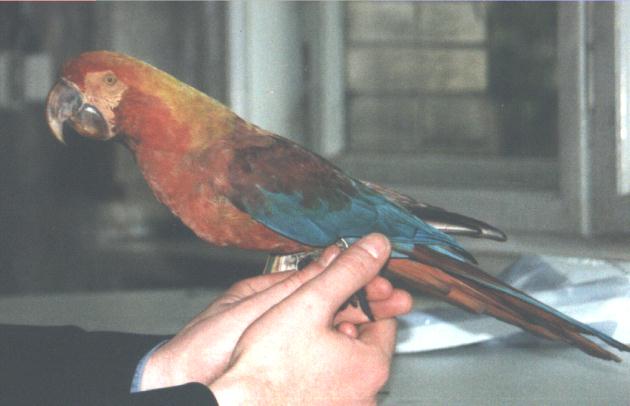Macaw - Cuban
Cuban Red Macaw Scientific Name: Ara tricolor
Fri, 1st November, 2024 - 2:21 am GMT
Sponsor Ads:

Alternative Name
Cuban Red Macaw Scientific Name: Ara tricolorBasic Info
The Cuban Macaw was approximately 20 inches in length and a dull, ruddy brownish red in color with a bright red throat and yellowish crown, which turned to orange on the nape. Its upper back was tinged with green and the lower back was blue. The lesser wing-coverts were brown in color with red edging. The outer primary-coverts were a beautiful dark blue as were the primaries. There were feathers of red underneath and the topside of the tail was brownish-red with blue tips. The underside of the tail and flight feathers both were ruddy and its beak was black with a pale tip. The Cuban Macaw's eyes were yellow, the cheeks white, and the feet brown.
Health
There is no specific care for this parrot, as the Cuban Macaw is unfortunately now extinct.Habitat
Around trees, forests and swamplandBehavior
Little is known about the Cuban Macaw, as this species has been considered extinct for over 100 years. The last reported sighting of a Cuban Macaw was in 1864, when one was shot on the southern coast of Cuba. In 1885, this breed vanished all together. The Cuban Macaw was social and could usually be found with a mate or a family, much like other Macaws, probably breeding in tall palms. Along with the Cuban Macaw, nine different species of Macaws have already become extinct due to trapping, hunting, deforestation, habitat destruction and possibly hurricanes. All of these birds were native to the Caribbean Islands.Origin
CubaHistory
It is speculated that the Cuban Macaw kept to the open country of Cuba, around trees, forests and swampland, living on a diet of fruits, seeds, and various plant shoots.Common Foods
fruits, seeds, and various plant shootsSponsor Ads:
Ther is only one honest impulse at the bottom of Puritanical religion, and that is the impulse to punish the man with a superior capacity for happiness. --H. L. Mencken
Macaw - Cuban
Coded by: BGID® | ALL RIGHTS RESERVED Copyright © 2000-2024
Disclaimer | Privacy | Report Errors / Contact | Credits

 versus
versus  The role of its Army, Politics, and Status in the World.
The role of its Army, Politics, and Status in the World. 
 versus
versus 
 This Thread is about the North Korean Military itself - the kind of army, navy, and air force they have.
This Thread is about the North Korean Military itself - the kind of army, navy, and air force they have. 
 versus
versus  versus
versus 
 versus
versus  versus
versus